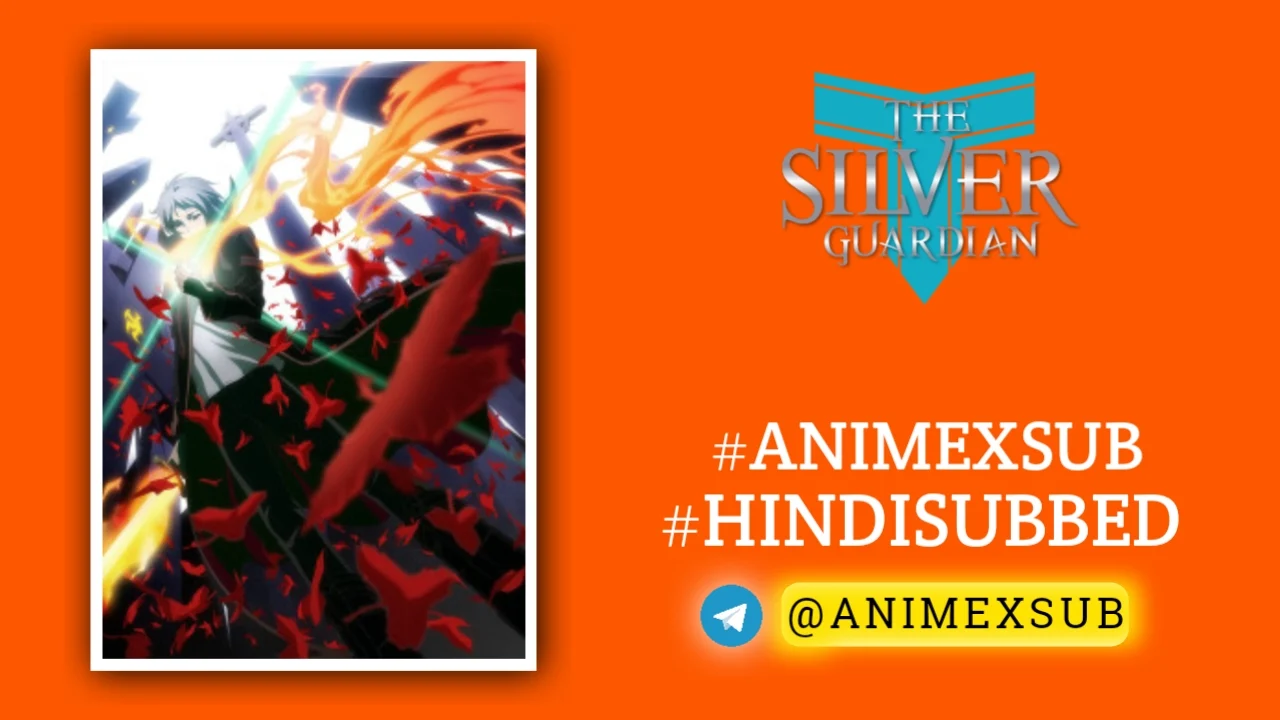
Dealing with Mikadono Sisters is Breeze! Hindi Subbed [09/12] | Mikadono Sanshimai wa Angai, Choroi. Hindi Sub

Mikadono Sanshimai wa Angai, Choroi.
Dealing with Mikadono Sisters Is a BreezeSynopsis
Yuu Ayase, son of a late legendary actress, is overwhelmingly mediocre. When he’s invited to stay with his mother’s friend, Yuu is shocked to find out that he’ll be living with three prodigy sisters who possess both beauty and talent…and who rule his new school as the Three Emperors. Can Yuu manage to melt the sisters’ cold hearts and fulfill his mother’s last wish for him to build a happy family? (Source: Crunchyroll)
Watch Trailer
Characters
Unveiling the Mikadono Enigma: A Tapestry of Talent and Tenderness
In the opulent corridors of Saika Academy, where prodigies forge their legacies, enters Yuu Ayase—a figure of unassuming ordinariness amid a storm of excellence. Season 1 of Dealing with Mikadono Sisters Is a Breeze masterfully weaves this contrast into a narrative that transcends typical harem tropes, offering instead a profound exploration of familial fractures and the quiet power of everyday empathy. Premiering in July 2025 under P.A. Works’ meticulous animation, the series adapts Aya Hirakawa’s manga with a finesse that captures the subtle emotional undercurrents, drawing viewers into a world where genius meets mediocrity not in conflict, but in complementary harmony. This inaugural season, spanning 12 episodes, unfolds as a symphony of character-driven moments, where each frame pulses with the weight of unspoken longings and the thrill of rediscovered bonds.
The Reluctant Heir: Yuu’s Journey from Shadows to Sanctuary
Yuu Ayase arrives burdened by the ghost of his mother, Subaru, the legendary actress whose shadow looms large over his unremarkable existence. Transferred to Saika Academy—a bastion for the elite—on the heels of her passing, Yuu embodies the archetype of the “talentless” protagonist, inheriting only her striking looks but none of her prodigious gifts. His mother’s dying wish echoes through his actions: to cultivate a genuine family, a dream denied to them by her relentless career. Entrusted to her old friend, Mr. Mikadono, Yuu steps into a sprawling mansion that houses not just luxury, but the enigmatic trio known as the “Three Emperors” of the academy. What begins as a survival tactic—navigating the sisters’ icy indifference—evolves into a heartfelt crusade. Yuu’s prowess lies not in academics or arts, but in the domestic arts: whipping up nourishing meals that bridge divides and tidying chaos into order. This unflashy heroism, devoid of superhuman feats, grounds the series in realism, making his growth from isolated outsider to emotional anchor feel profoundly earned. As episodes progress, particularly from the festival in Episode 3 onward, Yuu’s subtle interventions reveal layers of vulnerability beneath his calm demeanor, challenging viewers to reconsider what true strength entails in a world obsessed with excellence.
Portraits in Prodigy: Dissecting the Mikadono Triad’s Hidden Fractures
At the heart of the series’ allure are the Mikadono sisters, each a pillar of unparalleled talent yet isolated by their obsessions, their interactions a delicate dance of rivalry and restraint. Kazuki, the eldest, commands the performing arts department with a boyish charisma and unyielding pride, her flamboyant stage presence masking a deep-seated fear of vulnerability—epitomized in Episode 5’s date sequence, where she grapples with a role demanding uncharacteristic femininity. Niko, the middle child and martial arts phenom, exudes disciplined ferocity, her championship wins belying a secret yearning for softer expressions like cute attire, which bursts forth in Episode 7’s tense confrontation with her idol, Hayato Tatsumi. This episode masterfully highlights her internal conflict: the pull between unyielding ambition and the desire for personal connections, as Yuu’s support during a purse-snatching skirmish peels back her stoic facade. Then there’s Miwa, the youngest shogi savant, whose analytical mind dominates academics and board games, yet her emotional detachment stems from a hyper-focus that alienates even her siblings—seen poignantly in early episodes where family meals become battlegrounds of unspoken tensions. These portrayals elevate the series beyond surface-level charm; each sister’s arc in Season 1 delves into the psychological toll of prodigy status, revealing how their “weak sides”—slovenly home habits and sibling estrangement—humanize them. The animation by P.A. Works amplifies this, with fluid expressions capturing “gap moe” moments: derpy reactions and blushes that inject humor into their otherwise formidable auras, fostering a dynamic where Yuu’s mediocrity becomes the catalyst for their collective thawing.
Symphonies of Sentiment: Thematic Depths Amidst Comedic Currents
Season 1 excels in balancing levity with introspection, using the harem framework not as escapism, but as a lens for examining identity, legacy, and the illusions of perfection. Themes of familial reconstruction resonate deeply, as Yuu’s TV-drama-inspired ideals clash with the sisters’ reality, leading to episodes like the Cherry Blossom Night Festival (Episode 3) that blend cultural festivities with raw emotional revelations—kimonos adorning the sisters in rare synchronized vulnerability. The series critiques the pressure cooker of elite environments, showing how the Mikadono sisters’ talents, while empowering, have eroded their bonds, much like Subaru’s career isolated her from Yuu. Romantic undercurrents simmer without overt resolution, manifesting in subtle gestures: Niko’s embarrassed fluster during Episode 7’s public admiration, or Kazuki’s ASMR-tinged date that hints at budding affections. Yet, it’s the restoration of sibling ties—culminating in shared meals and mutual support—that forms the emotional core, subverting expectations of rivalry for a narrative of unity. Musically, Masaru Yokoyama’s score weaves tension and tenderness, complementing the opening “Kimi ni Fusawashii Kiseki” by Nichiyōbi no MAISONdes with its upbeat rhythm, while ending themes like Aoi Koga’s “One Road” underscore individual growth. This thematic purity avoids clichés, instead offering a nuanced commentary on how “breezy” connections can mend profound divides, making each episode a layered meditation on human imperfection.
Visual and Auditory Masterstrokes: P.A. Works’ Signature Elegance
P.A. Works’ adaptation shines through its visual poetry, transforming Hirakawa’s manga panels into a vibrant tapestry of expression and environment. Character designs by Yūsuke Inoue evoke CLAMP influences with sharp, emotive lines—Kazuki’s androgynous flair, Niko’s athletic poise, and Miwa’s intellectual sharpness rendered in dynamic poses that heighten comedic timing, such as the sisters’ synchronized freak-outs. Backgrounds of Saika Academy and the Mikadono estate exude refined opulence, with cherry blossoms and dojo scenes bursting in seasonal hues that mirror emotional blooms. Animation fluidity peaks in action sequences, like Niko’s martial arts clashes, blending realism with stylized flair to emphasize her internal turmoil. Audibly, the Japanese voice cast delivers nuanced performances: Minami Hinata’s earnest Yuu anchors the ensemble, while Aoi Koga’s tsundere Niko, Yoshino Aoyama’s proud Kazuki, and Yurina Amami’s calculated Miwa create a symphony of contrasts. The English dub, led by Caitlin Glass and featuring talents like Emi Lo and Madeleine Morris, maintains fidelity with natural inflections, debuting on July 30, 2025, for global accessibility. These elements coalesce into an auditory-visual feast that not only adapts faithfully but elevates the source material, ensuring Season 1’s episodes linger as immersive experiences.
Critical Echoes and Viewer Reverberations: A Consensus of Captivation
Reception for Season 1 has been overwhelmingly positive, with IMDb ratings hovering at 7.9 and MyAnimeList scores reflecting broad acclaim for its character depth and emotional resonance. Reddit discussions, particularly on r/anime’s episode threads, buzz with enthusiasm: Episode 1’s introduction garners praise for subverting harem expectations, with users noting Yuu’s “spine” and the sisters’ promising quirks, while later threads like Episode 6 highlight the “adorable” chaos and “beautiful animation” as seasonal standouts. Critics on Anime News Network commend the series’ avoidance of “dragged-out arcs,” appreciating its concise 12-episode structure that builds to satisfying familial milestones without filler. Viewer sentiments echo this, with many citing the “gap moe” reactions and Yuu’s wholesome influence as addictive hooks, though some early critiques point to initial sibling iciness as a slow burn. Manga readers appreciate the anime’s fidelity, noting enhanced emotional beats through animation, positioning it as a “hidden gem” amid 2025’s crowded romcom slate. Overall, the consensus underscores a series that rewards patience with profound payoffs, its blend of humor, heart, and subtlety earning it a devoted following by August 2025.
Echoes of Ensemble: Why This Breeze Reshapes Romantic Narratives
As Season 1 concludes its run, Dealing with Mikadono Sisters Is a Breeze stands as a beacon of refined storytelling, where the “breeze” of Yuu’s influence dissipates the fog of isolation among the Mikadono prodigies. This isn’t merely a tale of cohabitation; it’s an epic of rediscovery, challenging the glorification of talent by celebrating the unsung virtues of care and connection. In a genre often mired in exaggeration, the series’ purity lies in its restraint—romantic sparks ignite organically, familial healing unfolds gradually, and characters evolve without losing their essence. For anime enthusiasts seeking depth beneath the delight, this season delivers an unparalleled experience, one that lingers long after the credits, inviting reflection on the families we build and the breezes that guide us home.1









